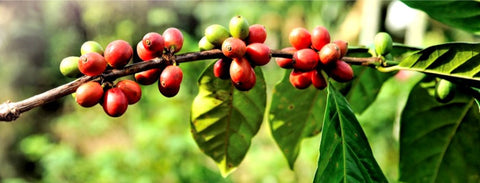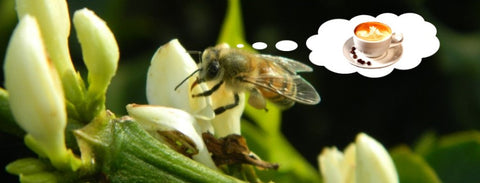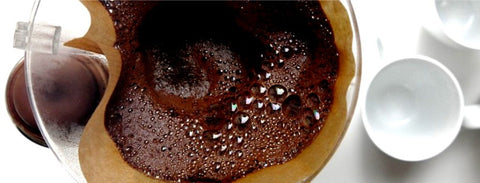The coffee plant belongs to the Rubiaceae family, which includes well over 13,000 different species of trees, shrubs and even herbs. We get coffee from the Coffea species. It is a perennial shrub but is often called a tree since it reaches heights of 20 feet or more. Interestingly, cultivated coffee shrubs are pruned down to about half their natural height.
Plants in the Rubiaceae family are found primarily in tropical climates. Several are prized for the substances we can derive from them, such as caffeine from the Coffea species and quinine from the Cinchona species.
The coffee shrub produces white flowers that are especially aromatic. It can take up to eight months for a shrub to bloom. The flowers last but a few short days, giving way to the fruit we know as the coffee cherry. At first, the shrub fills with hard, green cherries. These change color as they ripen, much like other fruits, from green to yellow to a deep, vibrant red. This process takes place over a period of about eight months. It can take up to five years for a coffee shrub to produce its first crop of coffee.
Let’s say you drink one coffee cup a day, every day of the year. As far as that shrub is concerned, you are consuming the annual harvest of nine coffee trees. Here’s how it all adds up. The coffee cherries from a single, healthy coffee shrub can yield up to two pounds of roasted coffee annually. Ah, but far more than a pound of cherries is required for that one pound of roasted bliss. What this means, if you’re interested in counting cherries, is 2,000 cherries for every single pound of roasted coffee beans.
Let’s hope these were Arabica beans. You would know if they were not, as the alternative, known as Robusta, is rather unpalatable on its own. Arabica beans are obtained from coffee shrubs grown at altitudes of over 3,000 feet, where the conditions are ideal for the coffee cherry to develop its best aroma and flavor attributes. This is why gourmet coffee tastes so good. The roaster’s methods play a significant role, of course. But we must also give praise where praise is due: nature tends toward perfect self-expression.
Did you know that the most reputable coffee plantations practice manual harvesting to this day? This is the only way to secure the best harvest as not all cherries ripen at the same rate, not even those sharing the same shrub. For this reason, coffee harvesting is a selective process that requires multiple sessions.
We raise our cup to the Rubiaceae family’s most delicious fruit.





Comments (0)
There are no comments for this article. Be the first one to leave a message!